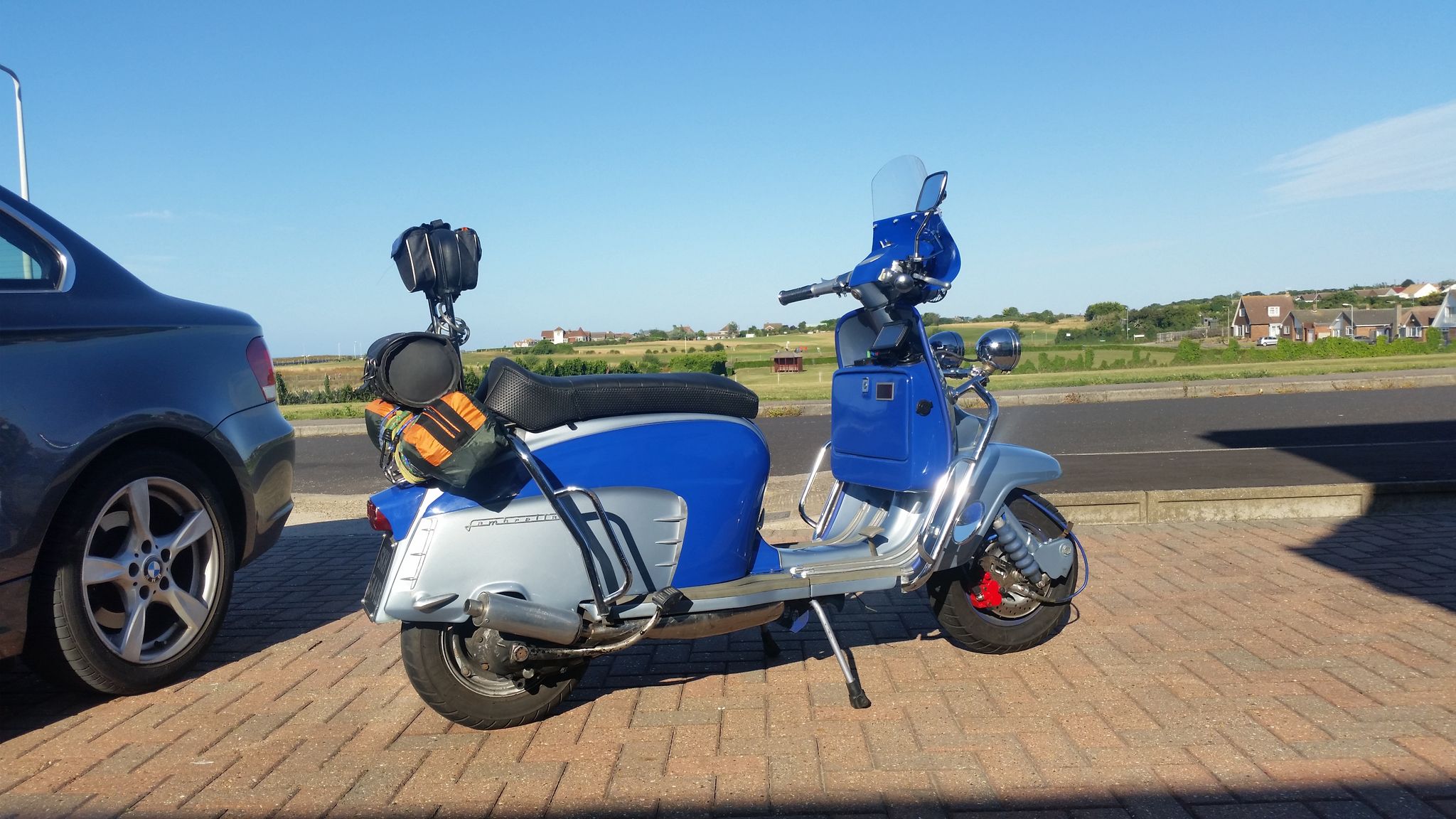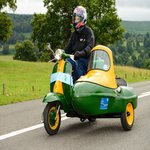^... can't say fairer than that.
Respectfully,
Adam
LCGB Forums
The ability to post messages is restricted to LCGB members. Any questions contact us at lcgbadmin@googlemail.com
Rear hub holder
30 posts
• Page 2 of 2 • 1, 2
Re: Rear hub holder
Yes well said Sir; sorry Sirs.
-

CHRIS in MARGATE - Posts: 4080
- Joined: Fri May 30, 2014 5:49 pm
Re: Rear hub holder
the main fault with the brake method (which i have used many times) is when you have a leaky oil seal to replace.
- a.lo
- Posts: 103
- Joined: Sat May 31, 2014 3:56 pm
Re: Rear hub holder
a.lo wrote:the main fault with the brake method (which i have used many times) is when you have a leaky oil seal to replace.
In this case you could you 'shock tactics' hit the spanner with a mallet,
-

Tractorman - Posts: 8735
- Joined: Mon Jun 02, 2014 3:07 pm
- Location: Lincoln
Re: Rear hub holder
My question would be, why not use a holding tool? Easy to make, easy to use and works well.
Not one I carry in my toolbox and used the brake method many more times than the holding tool due to side of the road problems. But in the garage it's always the holding tool.
Not one I carry in my toolbox and used the brake method many more times than the holding tool due to side of the road problems. But in the garage it's always the holding tool.
-

steveg - Posts: 710
- Joined: Tue May 13, 2014 10:09 pm
- Location: Derby & District SC (Derby)
Re: Rear hub holder
^ wise words Steve
-

Knowledge - Posts: 1972
- Joined: Sat May 31, 2014 11:42 am
- Location: Ipswich
Re: Rear hub holder
steveg wrote:My question would be, why not use a holding tool? Easy to make, easy to use and works well.
Not one I carry in my toolbox and used the brake method many more times than the holding tool due to side of the road problems. But in the garage it's always the holding tool.
Knowledge wrote:^ wise words Steve
Sometimes, before you make adverse comments, it pays to show that you have read all of the thread. To make it even easier for you to understand my reasoning, I've made the font colour red:
Warkton Tornado No.1 wrote:mr mugello wrote:Torquing up the rear hub by using the brake . Is it ok to do it this method ok if you don't have the holder to hand.
Even if I had access to a rear hub holder, I cannot think why I would choose to use it. I can’t recall ever seeing one in use, either & I think it’s fair to say that ‘I’ve been around’
To my way of thinking, the only components under any load when utilising the brake as the torque resistance are the shoes themselves. So, if they cannot hold the hub whilst torque is applied, then that would ring alarm bells to me!
I certainly wouldn’t remove a wheel to fit a tool in its place as the time involved, lack of stability & general inconvenience far outweigh any possible advantage.
As far as I am concerned, whilst this Forum remains civilised &, for the most part a 'two way street' as far as the exchange of information is concerned, I am happy to try to help regarding the topics raised. Inevitably, there will always be differences of opinions which cannot always be resolved.
With respect to all those contributors to this particular thread, I think you'll find that Adam & I were the two main contributors.
It's fair to say we have both attempted to draw a line under this matter, but, with the comments above, I felt compelled to step up again.
I will say no more other than it appears likely you both missed the other comment that I made, also with the font colour red to make it easier for you:
Warkton Tornado No.1 wrote:Adam_Winstone wrote:^... agree 100% that there are times when this is the only method available and I too have used it over and over again, although involving my wife normally complicates matters. On the bench the holding tool works a treat, especially when pulling the layshaft home for shimming the gearbox, and now in most cases (for the sake of 4 nuts) will fit the holding tool, rather than applying the brake, if the bike is at home and the holder is available. I consider this to be 'best practice'.
It seems like most of us have used the rear brake method, and continue to do so, but it is not my first choice for the reasons that I've outlined.
Adam
Just to draw my own line under the debate & merits of the two principal methods of hub tightening.
As some clarification, I am advocating the use of using the rear brake as a means of holding the hub for torquing of the hub nut when the lay-shaft has been ‘set’ correctly relevant to the gearbox shimming procedure (0.003 – 0.011”)
Under such circumstances , it is my belief that any ‘lateral side loading’ is inconsequential/unlikely to affect the procedure of tightening the hub nut as there will be compliance laterally (as stated above) as well as the inevitable compliance of the friction surfaces themselves allowing for ‘creep’ if necessary.
If in doubt, then the torquing (using the rear brake) should adopt an ‘on-off ‘ procedure to ensure that lateral loading cannot be excessive, if such a condition could actually occur. I doubt that it can & I’m only paying lip service to it.
Unfortunately, I accept that this (civilised) debate can only ever be conclusive were there back to back tests in laboratory conditions. In the absence of such a luxury, the two main camps should agree to disagree.
- Warkton Tornado No.1
- Posts: 2257
- Joined: Sun Jan 11, 2015 1:27 pm
Re: Rear hub holder
What a pompous post WT1. Red ink indeed.
So you are happy for this forum to be a two way street, as long as all the traffic is going your way.
I disagree about the use of standing on the brake to lock the back wheel for tightening the hub nut, and I particularly disagree with your justification. The wide Lambretta stand is one of the most stable fitted to any two wheeler, and I believe that standing on the brake causes distortion by stressing the hub in a non-uniform way. No I don't have a lab to prove it, but I can avoid the issue by using a hub holding tool.
I may not have time to respond to you inevitable reply, as I am busy building a scooter in the workshop where I don't have a keyboard.
So you are happy for this forum to be a two way street, as long as all the traffic is going your way.
I disagree about the use of standing on the brake to lock the back wheel for tightening the hub nut, and I particularly disagree with your justification. The wide Lambretta stand is one of the most stable fitted to any two wheeler, and I believe that standing on the brake causes distortion by stressing the hub in a non-uniform way. No I don't have a lab to prove it, but I can avoid the issue by using a hub holding tool.
I may not have time to respond to you inevitable reply, as I am busy building a scooter in the workshop where I don't have a keyboard.
-

Knowledge - Posts: 1972
- Joined: Sat May 31, 2014 11:42 am
- Location: Ipswich
Re: Rear hub holder
Knowledge wrote:What a pompous post WT1. Red ink indeed.
So you are happy for this forum to be a two way street, as long as all the traffic is going your way.
I disagree about the use of standing on the brake to lock the back wheel for tightening the hub nut, and I particularly disagree with your justification. The wide Lambretta stand is one of the most stable fitted to any two wheeler, and I believe that standing on the brake causes distortion by stressing the hub in a non-uniform way. No I don't have a lab to prove it, but I can avoid the issue by using a hub holding tool.
I may not have time to respond to you inevitable reply, as I am busy building a scooter in the workshop where I don't have a keyboard.
Inevitable, eh?
If ‘pompous’ is pointing out that you’ve failed to read the whole Post before making your glib comments, then so be it.
My own interpretation of ‘pompous’ would be toward the type of person that calls themselves ‘Knowledge’ when that is one commodity they lack.
Further examples would be of the kind of Forum member that (having asked on here, & received many, well intentioned replies) ignores advice & then spends a lot of their time in the workshop trying to prove why aluminium cylinder head nuts are not used universally.
Good Luck with all of your other such attempts @ alchemy.
You do not have the required permissions to view the files attached to this post.
- Warkton Tornado No.1
- Posts: 2257
- Joined: Sun Jan 11, 2015 1:27 pm
Re: Rear hub holder
Now now boys...... play nicely or you'll get no sweeties.
-

Fast n Furious - Posts: 1716
- Joined: Sat Nov 19, 2016 3:56 am
- Location: York
30 posts
• Page 2 of 2 • 1, 2
Who is online
Users browsing this forum: Covboy and 17 guests